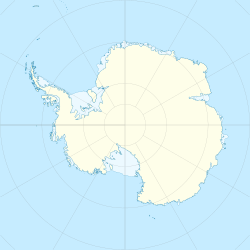Morency Island facts for kids
|
Location in Antarctica
|
|
| Geography | |
|---|---|
| Location | Antarctica |
| Coordinates | 71°2′S 61°9′W / 71.033°S 61.150°W |
| Length | 2 km (1.2 mi) |
| Administration | |
| Administered under the Antarctic Treaty System | |
| Demographics | |
| Population | Uninhabited |
Morency Island is a small, icy island located off the coast of Palmer Land in Antarctica. It is about 1 nautical mile (which is about 1.85 kilometers) long. This island lies just west of Steele Island and about 10 nautical miles (around 18.5 kilometers) northwest of Cape Bryant. It's part of the vast, frozen continent of Antarctica, a unique place on Earth.
Contents
Discovering Morency Island
Morency Island was first seen and explored in 1940. Members of the East Base of the United States Antarctic Service discovered it. They explored this part of the Antarctic coast both by land and from airplanes.
Who Was Anthony J.L. Morency?
The island was named after Anthony J.L. Morency. He was an important member of the East Base team. Anthony J.L. Morency worked as a tractor driver, helping the explorers move supplies and equipment across the icy landscape. Naming the island after him was a way to honor his contributions to the expedition.
Where is Morency Island Located?
Morency Island is situated off the east coast of Palmer Land. Palmer Land is the northern part of the Antarctic Peninsula. This peninsula is a long, curved arm of land that stretches out from the main Antarctic continent. It points towards South America.
The Antarctic Continent
Antarctica is the southernmost continent on Earth. It is almost entirely covered by ice. It is the coldest, driest, and windiest continent. No humans live there permanently. Scientists and researchers visit for short periods to study its unique environment.
What is the Antarctic Treaty System?
Morency Island, like all of Antarctica, is governed by the Antarctic Treaty System. This is a special agreement signed by many countries. It makes sure that Antarctica is used only for peaceful purposes, like scientific research. It also protects the continent's environment. This treaty helps countries work together in Antarctica. It prevents any single country from owning parts of the continent.


